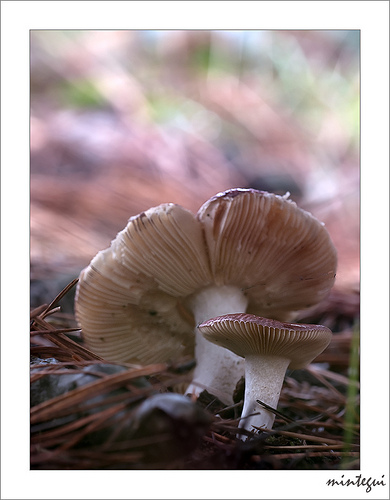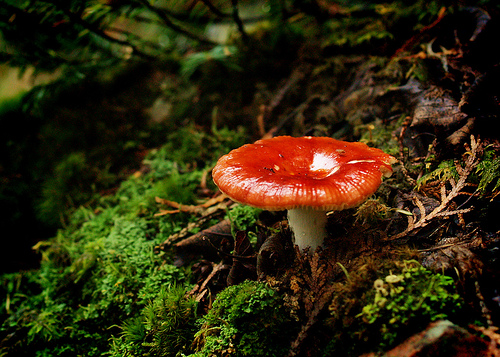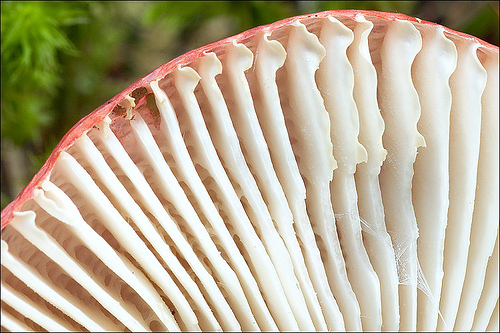Adaptations
Being well fitted for the environment surrounding it is one of the most important ways organisms can increase their chance for survival. All organisms show adaptations of some kind. The Russula emetica has a few interesting evolutionary adaptations that will now be delved into.
Surface Area:
The fruiting body of the Russula emetica has a gilled underside which exponentially increases the spore bearing surface area of the mushroom. This allows more spores to be produced which can then distributed by the wind.
Stimuli:
In response to stimuli such as gravity the gills on the R. emetica will always be angled so they are parallel with gravitational pull. This makes it so that no matter what way the mushroom is leaning it should generally still be able to release the basidiospores it carries.
 Without
this adaptation the R. emetica in the picture to the left
wouldn't be able to appropriately disperse of the spores it contains.
Under certain conditions light will tell the fungus if it is outside of
the substrate and if it should begin sporulation.
Without
this adaptation the R. emetica in the picture to the left
wouldn't be able to appropriately disperse of the spores it contains.
Under certain conditions light will tell the fungus if it is outside of
the substrate and if it should begin sporulation.
Fungi specific adaptations:
Fungi have adapted a unique way of getting there nutrients with exoenzymes that digest the food outside of the fungi then the fungi ingest the nutrients from the dissolved matter. This way of eating allows fungi to metabolize a greater variety of materials than most oranisms.
Back to home

